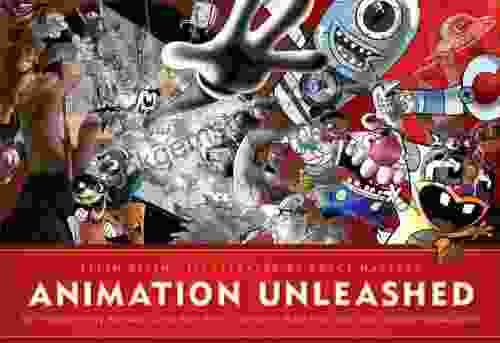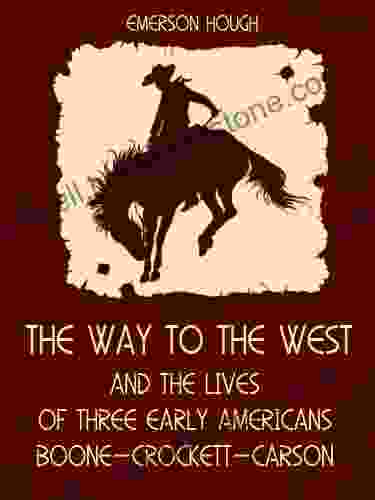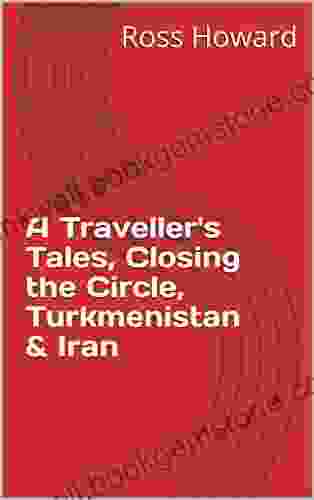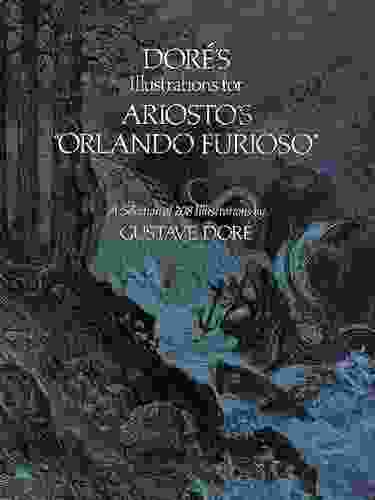100 Essential Principles for Animators, Comic Writers, Filmmakers, Video Artists, and Game Developers

An in-depth exploration of the fundamental principles that govern the creation of compelling visual narratives.
Chapter 1: The 12 Principles of Animation
1. Squash and Stretch: Exaggerate the deformation of an object to create a sense of weight and movement.
4.4 out of 5
| Language | : | English |
| File size | : | 5412 KB |
| Text-to-Speech | : | Enabled |
| Screen Reader | : | Supported |
| Enhanced typesetting | : | Enabled |
| Word Wise | : | Enabled |
| Print length | : | 245 pages |
2. Anticipation: Prepare the audience for an upcoming action by showing a subtle movement that precedes it.
3. Staging: Position the characters and objects within the frame to clearly communicate the story and action.
4. Straight Ahead Action and Pose to Pose: Choose the most effective animation method depending on the desired result: smooth, flowing motion (straight ahead) or controlled, precise poses (pose to pose).
5. Follow Through and Overlapping Action: Allow objects to continue moving after the main action has ended, creating a sense of momentum and realism.
6. Slow In and Slow Out: Gradually accelerate and decelerate movement to enhance the impact of actions.
7. Arcs: Use curved paths to create natural and fluid movement instead of rigid straight lines.
8. Secondary Action: Add additional movements to enhance the primary action and make it more convincing.
9. Timing: Control the duration of actions to convey the desired mood, emotion, and physicality.
10. Exaggeration: Amplify actions and expressions to create emphasis and visual impact.
11. Solid Drawing: Pay attention to the fundamentals of drawing, anatomy, and perspective to ensure realistic and believable animation.
12. Appeal: Make the characters and scenes visually appealing and relatable to the audience.
Chapter 2: The 12 Principles of Comic Writing
1. Hook: Grab the reader's attention with a compelling opening scene that establishes the story's conflict and stakes.
2. Staging: Use panel composition and layout to guide the reader's eye and create a visual narrative.
3. Clarity: Ensure that the story is easy to understand and follow, without unnecessary complexity or confusing transitions.
4. Conflict: Introduce conflicts that drive the plot forward and create tension and suspense.
5. Characterization: Develop relatable and well-rounded characters with clear motivations and arcs.
6. Pacing: Control the flow of information and action to create a balanced and engaging reading experience.
7. Dialogue: Use dialogue to advance the plot, reveal character motivations, and provide insights into their relationships.
8. Art: Choose an art style that complements the story and enhances the visual experience.
9. Symbolism: Use visual cues, metaphors, and symbols to convey deeper meanings and themes.
10. Theme: Craft a story that explores meaningful and universal themes that resonate with the audience.
11. Resolution: Provide a satisfying that addresses the conflicts and leaves the reader feeling fulfilled.
12. Originality: Create a unique and memorable story that sets it apart from other comics.
Chapter 3: The 12 Principles of Filmmaking
1. Idea: Develop a compelling story idea that forms the foundation of the film.
2. Script: Write a well-structured screenplay that establishes characters, plot, and themes.
3. Directing: Guide the actors, crew, and technical aspects of the film to realize the vision.
4. Cinematography: Use lighting, camera angles, and framing to create visually compelling and emotionally resonant images.
5. Editing: Assemble the footage into a coherent and engaging narrative, controlling pacing and flow.
6. Sound Design: Create an immersive auditory experience that complements the visuals and enhances the emotional impact.
7. Music: Compose or select music that amplifies the emotions and sets the tone for the film.
8. Production Design: Design the sets, costumes, and props to establish the setting and atmosphere of the story.
9. Marketing: Develop a strategy to promote and distribute the film, reaching the target audience.
10. Distribution: Choose the most effective channels to release the film, ensuring accessibility and visibility.
11. Festivals: Submit the film to prestigious film festivals to gain critical acclaim and attract attention.
12. Impact: Create a film that leaves a lasting impact on the audience, inspiring thought, emotions, and societal change.
Chapter 4: The 12 Principles of Video Art
1. Concept: Develop a strong conceptual framework that drives the creation of the video art.
2. Form: Choose a format and medium that best conveys the artistic vision, whether it's documentary, narrative, abstract, or experimental.
3. Imagery: Use visuals to evoke emotions, convey ideas, and create a unique aesthetic experience.
4. Sound: Incorporate sound to enhance the visual impact, set the mood, or provide insights into the narrative.
5. Editing: Sequence and manipulate footage to create a cohesive and impactful visual narrative.
6. Montage: Use rapid-fire editing and juxtaposition to convey complex ideas or create a specific emotional response.
7. Camera Movement: Employ camera movements to emphasize key moments, explore the environment, or create a sense of instability.
8. Lighting: Control light to create atmosphere, depth, and convey emotions.
9. Color Theory: Utilize color to evoke specific moods, convey symbolism, or enhance the visual appeal.
10. Appropriation: Incorporate pre-existing footage, images, or sounds into the artwork, creating new meanings and perspectives.
11. Collaboration: Engage with other artists, performers, or technicians to expand the creative potential of the project.
12. Exhibition: Find the most appropriate platform to showcase the video art, considering its audience, context, and technical requirements.
Chapter 5: The 12 Principles of Game Development
1. Gameplay: Design a game that offers engaging, challenging, and rewarding gameplay experiences.
2. Story: Create a compelling narrative that drives the game's progression and connects with players on an emotional level.
3. Characters: Develop relatable and memorable characters that players can connect with and invest in.
4. Worldbuilding: Build a rich and immersive world that provides context, atmosphere, and opportunities for exploration.
5. Level Design: Craft levels that challenge players, encourage exploration, and present clear objectives.
6. User Experience: Ensure that the game is user-friendly, responsive, and accessible to a wide range of players.
7. Game Engine: Choose the appropriate game engine to support the game's technical requirements and creative vision.
8. Art Style: Determine an art style that enhances the gameplay experience, creates a unique aesthetic, and appeals to the target audience.
9. Sound Design: Use sound to create ambiance, reinforce gameplay cues, and enhance the overall experience.
10. Animation: Employ animation to bring characters and objects to life, convey emotions, and facilitate gameplay interactions.
11. Physics: Utilize physics engines to create realistic simulations that enhance gameplay and player engagement.
12. Marketing: Develop a marketing strategy to reach the target audience, generate buzz, and promote the game's release.
4.4 out of 5
| Language | : | English |
| File size | : | 5412 KB |
| Text-to-Speech | : | Enabled |
| Screen Reader | : | Supported |
| Enhanced typesetting | : | Enabled |
| Word Wise | : | Enabled |
| Print length | : | 245 pages |
Do you want to contribute by writing guest posts on this blog?
Please contact us and send us a resume of previous articles that you have written.
 Best Book
Best Book Page Flip
Page Flip Bookshelf
Bookshelf Literary loom
Literary loom Chapter
Chapter Bookish
Bookish PageTurner
PageTurner Bibliophile
Bibliophile Story
Story Inkwell
Inkwell Bookworm
Bookworm Labyrinth
Labyrinth Plot Twist
Plot Twist Prose
Prose Paperback
Paperback Storyteller
Storyteller Sanctuary
Sanctuary Fiction
Fiction Reading
Reading Chronicle
Chronicle Read
Read Daniel Verastiqui
Daniel Verastiqui Helene Cixous
Helene Cixous David A Robertson
David A Robertson Phyllis Klotz
Phyllis Klotz El Greco
El Greco Megan Hess
Megan Hess Phil Maxey
Phil Maxey Rick Furphy
Rick Furphy Gabriel Miller
Gabriel Miller Doug Gelbert
Doug Gelbert Matt Fox
Matt Fox Nella Larsen
Nella Larsen E E Knight
E E Knight Orson Scott Card
Orson Scott Card Tahir Shah
Tahir Shah Moritz Fink
Moritz Fink Logan Jacobs
Logan Jacobs Eduardo Galeano
Eduardo Galeano Greg Manning
Greg Manning Bruno Munari
Bruno Munari Rohan M Vider
Rohan M Vider Jupiter Kids
Jupiter Kids Jennifer Frick Ruppert
Jennifer Frick Ruppert Debra Kayn
Debra Kayn Victoria Lewis
Victoria Lewis Tessa Hadley
Tessa Hadley Sari Botton
Sari Botton Helen Keller
Helen Keller Kellye Garrett
Kellye Garrett L L Richman
L L Richman Sei Shonagon
Sei Shonagon Mike Yoshiaki Daikubara
Mike Yoshiaki Daikubara Diane Wilson
Diane Wilson Paper Monument
Paper Monument Jade Royal
Jade Royal Jessica Hische
Jessica Hische Doris Lessing
Doris Lessing Paul J Foster
Paul J Foster Pablo Hidalgo
Pablo Hidalgo Emma Baxter Wright
Emma Baxter Wright Julie Kavanagh
Julie Kavanagh Nathan Hystad
Nathan Hystad Tom Cole
Tom Cole Kale James
Kale James Dennis E Taylor
Dennis E Taylor Isidra Mencos
Isidra Mencos Richard Huber
Richard Huber Jeff Pearlman
Jeff Pearlman Michael Ferber
Michael Ferber Maurice White
Maurice White Sarah Lentz
Sarah Lentz Duncan M Webb
Duncan M Webb Roz Marshall
Roz Marshall Louis Blanc
Louis Blanc Rosemary Mahoney
Rosemary Mahoney Imbolo Mbue
Imbolo Mbue Joe Holt
Joe Holt Emma Block
Emma Block Yoshitomo Ikawa
Yoshitomo Ikawa Rebecca Solnit
Rebecca Solnit Maria Hinojosa
Maria Hinojosa Sebastien De Castell
Sebastien De Castell Ralph Kern
Ralph Kern Malcolm X
Malcolm X Jeanne St James
Jeanne St James Pedro Martinez
Pedro Martinez Arthur C Danto
Arthur C Danto Dustin Graham
Dustin Graham Dr Harpal Sodhi
Dr Harpal Sodhi Ben Swanepoel
Ben Swanepoel Roger Scruton
Roger Scruton Harry Harrison
Harry Harrison James A Michener
James A Michener Mark Farnsworth
Mark Farnsworth Robyne Leblanc
Robyne Leblanc Roberta Carter Clark
Roberta Carter Clark Mala Kacenberg
Mala Kacenberg Ed Hooks
Ed Hooks Ashleynicole
Ashleynicole J R Ward
J R Ward Octavia Hyde
Octavia Hyde Joseph Toone
Joseph Toone Shimrit Elisar
Shimrit Elisar Jack Campbell
Jack Campbell James W Stanfield Jr
James W Stanfield Jr Edward Willett
Edward Willett Sarah Nisbett
Sarah Nisbett Jonathan Green
Jonathan Green Wendy Lesser
Wendy Lesser Jason Caldwell
Jason Caldwell Michael Dante Dimartino
Michael Dante Dimartino Sarah Turnbull
Sarah Turnbull Dervla Murphy
Dervla Murphy Joe Greer
Joe Greer Mulk Raj Anand
Mulk Raj Anand Madeleine Orban Szontagh
Madeleine Orban Szontagh Dori Griffin
Dori Griffin Robert Bree
Robert Bree Zachary Fenell
Zachary Fenell Daniel Ankele
Daniel Ankele Ruth Leaf
Ruth Leaf Ferrett Steinmetz
Ferrett Steinmetz Jean Luc Nancy
Jean Luc Nancy Raymond L Weil
Raymond L Weil James Dickey
James Dickey Rylee Tipton
Rylee Tipton Emma Svensson
Emma Svensson Eli Brook
Eli Brook John Brewer
John Brewer Victoria Christopher Murray
Victoria Christopher Murray Kurt Meissner
Kurt Meissner Donna Everhart
Donna Everhart Grace Hamilton
Grace Hamilton Devin Harbison
Devin Harbison W R Tymms
W R Tymms Michael R Jacobs
Michael R Jacobs Modris Eksteins
Modris Eksteins Luana Luconi Winner
Luana Luconi Winner Phil Kelly
Phil Kelly Yehuda Koren
Yehuda Koren Kim Brown Seely
Kim Brown Seely John Michael Rivera
John Michael Rivera Sarah Pinsker
Sarah Pinsker Wes Moore
Wes Moore Jesse Mccarthy
Jesse Mccarthy Edward Struzik
Edward Struzik Mia Leonin
Mia Leonin Jared Blando
Jared Blando Lea Rawls
Lea Rawls Jean Le Pautre
Jean Le Pautre Jeff Farr
Jeff Farr Rachel Mclean
Rachel Mclean Nicholas Wapshott
Nicholas Wapshott Zongyan Hu
Zongyan Hu Lady Dia
Lady Dia Laurence Maslon
Laurence Maslon Jan Kunz
Jan Kunz E B Dawson
E B Dawson Lauren Beukes
Lauren Beukes Don Peri
Don Peri Dorothy Grant
Dorothy Grant Joanne Fink
Joanne Fink Edward Sylvester Ellis
Edward Sylvester Ellis Emerson Hough
Emerson Hough Dick Durham
Dick Durham William V Dunning
William V Dunning Loretta Outwater Cox
Loretta Outwater Cox Keeyla Meadows
Keeyla Meadows Elena Tchernichova
Elena Tchernichova Robert N Charrette
Robert N Charrette Latin Travel
Latin Travel S J Pajonas
S J Pajonas Sean D Young
Sean D Young Ellisa Bender
Ellisa Bender Robert D Armstrong
Robert D Armstrong Elle Wright
Elle Wright Ellen Murkison
Ellen Murkison Bil Donovan
Bil Donovan Frank Right
Frank Right Lewis Knight
Lewis Knight Mark Cooper
Mark Cooper Leslie Buck
Leslie Buck Edward Burns
Edward Burns Elizabeth Kincaid
Elizabeth Kincaid Edwin Harkness Spina
Edwin Harkness Spina Maggie Nelson
Maggie Nelson Roger Kahn
Roger Kahn Language Learning University
Language Learning University Elizabeth Mowry
Elizabeth Mowry Rosecrans Baldwin
Rosecrans Baldwin Brian Dougherty
Brian Dougherty Dick Jackson
Dick Jackson Hugh Iwanicki
Hugh Iwanicki Joy Harjo
Joy Harjo Gary K Wolf
Gary K Wolf Elizabeth Bonesteel
Elizabeth Bonesteel Benjamin R Jordan
Benjamin R Jordan James Goddard
James Goddard Emily Haynes
Emily Haynes Nai
Nai Regis Yaworski
Regis Yaworski Janet Lynn Cano
Janet Lynn Cano Eddy De Wind
Eddy De Wind Mint Editions
Mint Editions James R Lilley
James R Lilley Sam Baldwin
Sam Baldwin Riad Sattouf
Riad Sattouf Wanda M Morris
Wanda M Morris Jim Green
Jim Green Johannes Zang
Johannes Zang T C Edge
T C Edge Izzy Paskowitz
Izzy Paskowitz Jasmine Guillory
Jasmine Guillory Violet Kupersmith
Violet Kupersmith Luigi Amara
Luigi Amara Nicholas Woodsworth
Nicholas Woodsworth John F Harnish
John F Harnish Diana O Gilvie
Diana O Gilvie Gabriela Jauregui
Gabriela Jauregui John Anthony Davis
John Anthony Davis Robert Ullian
Robert Ullian Matteo Cossu
Matteo Cossu Elizabeth Stansberry
Elizabeth Stansberry Jackie Simmonds
Jackie Simmonds Dylan Birtolo
Dylan Birtolo Eat Like A Local
Eat Like A Local Lisa Rose Wright
Lisa Rose Wright Joel Enos
Joel Enos Rachel Polonsky
Rachel Polonsky Didier Ghez
Didier Ghez E John B Allen
E John B Allen Sloan De Forest
Sloan De Forest Jamie Eubanks
Jamie Eubanks E E Smith
E E Smith Valerie Boyd
Valerie Boyd Thad Carhart
Thad Carhart Kiese Laymon
Kiese Laymon Jesse Storm
Jesse Storm William Silvester
William Silvester Randy Wayne White
Randy Wayne White Skywatcher Press
Skywatcher Press Elizabeth Size
Elizabeth Size Radim Malinic
Radim Malinic Shaunna Russell
Shaunna Russell Edward M Lerner
Edward M Lerner Edward Chisholm
Edward Chisholm E M Forster
E M Forster Victoria Shearer
Victoria Shearer Steven M Barrett
Steven M Barrett Eric Rickstad
Eric Rickstad Charles Dellheim
Charles Dellheim Elaine A Powers
Elaine A Powers Ruth Wilshaw
Ruth Wilshaw Yuri Leving
Yuri Leving Diane Kochilas
Diane Kochilas Robert M Utley
Robert M Utley Neil Bennion
Neil Bennion Maya Washington
Maya Washington Larry Mcmurtry
Larry Mcmurtry George Kubler
George Kubler Greg Simonds
Greg Simonds Emma Gift
Emma Gift Hannah Dale
Hannah Dale Peter Spiegelman
Peter Spiegelman Eliot Peper
Eliot Peper Ethan Casey
Ethan Casey Donald Hamilton
Donald Hamilton Douglas Phillips
Douglas Phillips Eric Thomas
Eric Thomas Scott Kloos
Scott Kloos Nancy Reyner
Nancy Reyner Graham Webb
Graham Webb Eloisa James
Eloisa James Edwidge Danticat
Edwidge Danticat Dessy Tsolova
Dessy Tsolova Eddie Armer
Eddie Armer Tom Ryan
Tom Ryan George Catlin
George Catlin Hernan Diaz
Hernan Diaz Ellen Eagle
Ellen Eagle Thomas Booth
Thomas Booth Linda Riesenberg Fisler
Linda Riesenberg Fisler Ellen Grady
Ellen Grady John S C Abbott
John S C Abbott Julian Armfield
Julian Armfield Jenni Basch
Jenni Basch Scott Olsen
Scott Olsen Eva Marie Magill Oliver
Eva Marie Magill Oliver Elizabeth Alexander
Elizabeth Alexander Kate Stevens
Kate Stevens Max Fatouretchi
Max Fatouretchi S Rob
S Rob Jamie K Schmidt
Jamie K Schmidt Dermot Mcevoy
Dermot Mcevoy Diane Greenberg
Diane Greenberg Jean Pierre Isbouts
Jean Pierre Isbouts Josef Feller
Josef Feller Jonathan Sacks
Jonathan Sacks Tanya Talaga
Tanya Talaga Joey Korenman
Joey Korenman Emily Scherb
Emily Scherb Edwin George Lutz
Edwin George Lutz Jacques Derrida
Jacques Derrida Nina Garcia
Nina Garcia Faythe Levine
Faythe Levine John Sandford
John Sandford Clarence King
Clarence King Dorothy Dent
Dorothy Dent Liza Rodman
Liza Rodman Miss Jazzie
Miss Jazzie Peter Lord
Peter Lord Peter Carey
Peter Carey Maria Arango Diener
Maria Arango Diener Martha Bayne
Martha Bayne C M Carney
C M Carney Edward Branigan
Edward Branigan Jacob Burckhardt
Jacob Burckhardt Paul Noble
Paul Noble Kelley Swain
Kelley Swain Patrick Syme
Patrick Syme Halka Chronic
Halka Chronic Nichole Perkins
Nichole Perkins Christopher Johns
Christopher Johns Desmond King
Desmond King Rose Art
Rose Art Darin Martineau
Darin Martineau Rachel Aaron
Rachel Aaron Naglaa Ghali
Naglaa Ghali Insight Guides
Insight Guides Mary Jane Jacob
Mary Jane Jacob L D Goffigan
L D Goffigan Matthew Farrer
Matthew Farrer Langston Hughes
Langston Hughes Stu Lloyd
Stu Lloyd Michael R Pitts
Michael R Pitts Stephanie Elizondo Griest
Stephanie Elizondo Griest Joy Deja King
Joy Deja King Ralph Cotton
Ralph Cotton Christine A Collins
Christine A Collins Geoff Kersey
Geoff Kersey Stephen Clarke
Stephen Clarke Elizabeth Kendall
Elizabeth Kendall Emily Craft By Maker Academy
Emily Craft By Maker Academy Brett Tate
Brett Tate Jeff Long
Jeff Long Elizabeth L Eisenstein
Elizabeth L Eisenstein Robert E Howard
Robert E Howard Gregory Curtis
Gregory Curtis Michael R Fletcher
Michael R Fletcher Jasper Rees
Jasper Rees Tracy Brown
Tracy Brown Emily Carr
Emily Carr Gabriella Contestabile
Gabriella Contestabile Laura A Macaluso
Laura A Macaluso Sanyika Shakur
Sanyika Shakur Simon Gervais
Simon Gervais Jean Muenchrath
Jean Muenchrath Tiffany Dufu
Tiffany Dufu Giuseppe Cristiano
Giuseppe Cristiano Loki Renard
Loki Renard Eliza Ruhamah Scidmore
Eliza Ruhamah Scidmore Patti Smith
Patti Smith Emiliano Zapata
Emiliano Zapata Insight Traveller
Insight Traveller Zarifa Ghafari
Zarifa Ghafari Ed Sikov
Ed Sikov Peter Marren
Peter Marren Stanley Vestal
Stanley Vestal Arlo Adams
Arlo Adams Jim Krause
Jim Krause Elena Gorokhova
Elena Gorokhova Susanna Kaysen
Susanna Kaysen Margarita Gokun Silver
Margarita Gokun Silver Devon C Ford
Devon C Ford Maria Nolasco
Maria Nolasco Judy Botello
Judy Botello Karen Campbell
Karen Campbell Eric Gill
Eric Gill Tjio Kayloe
Tjio Kayloe Joi Barrios
Joi Barrios Richard Tabor Greene
Richard Tabor Greene Lynne Pickering
Lynne Pickering Wensley Clarkson
Wensley Clarkson Tarana Burke
Tarana Burke Diane Keaton
Diane Keaton Jeff Lenburg
Jeff Lenburg Karen Kluglein
Karen Kluglein John Brunner
John Brunner Marvin Kalb
Marvin Kalb Whitney Chadwick
Whitney Chadwick Diane Seuss
Diane Seuss Glenn Rudin
Glenn Rudin Daniel Gross
Daniel Gross John G Neihardt
John G Neihardt Kate Lock
Kate Lock Pm Johnson
Pm Johnson Chris Legaspi
Chris Legaspi Elizabeth Bear
Elizabeth Bear James Egan
James Egan Jian Ping
Jian Ping Geniuz Gamer
Geniuz Gamer Gustave Dore
Gustave Dore Derek Murphy
Derek Murphy L X Beckett
L X Beckett Paris Permenter
Paris Permenter Vasily Mahanenko
Vasily Mahanenko Mindy Mejia
Mindy Mejia Reed Farrel Coleman
Reed Farrel Coleman Phuc Tran
Phuc Tran Edgar A Whitney
Edgar A Whitney Jane Evans
Jane Evans Patricia Telesco
Patricia Telesco Elie Wiesel
Elie Wiesel Gina S
Gina S Ellen Winner
Ellen Winner Manifestation Publishing House
Manifestation Publishing House Richard Detrich
Richard Detrich Thomas Shor
Thomas Shor Wendy E Simmons
Wendy E Simmons Spike Bucklow
Spike Bucklow Uncle Brazil
Uncle Brazil Gananath Obeyesekere
Gananath Obeyesekere Jason Tselentis
Jason Tselentis Roark Bradford
Roark Bradford G A Matiasz
G A Matiasz Mark Twain
Mark Twain Diana Somerville
Diana Somerville Tim Travis
Tim Travis Kassanna
Kassanna Lisa Kleypas
Lisa Kleypas Tom Shone
Tom Shone Christopher Hart
Christopher Hart Mark Franko
Mark Franko Robert E Kapsis
Robert E Kapsis Diana Marcum
Diana Marcum Paul Doyle
Paul Doyle Gene Perret
Gene Perret Steve Balderson
Steve Balderson Mark Stattelman
Mark Stattelman Sergey Skudaev
Sergey Skudaev Elizabeth Becker
Elizabeth Becker James Joseph
James Joseph Mika Tufuga Valai
Mika Tufuga Valai Tessa Bailey
Tessa Bailey John Matthews
John Matthews Duncan Barrett
Duncan Barrett Arthur C Clarke
Arthur C Clarke Elaine Bertolotti
Elaine Bertolotti Noah Galloway
Noah Galloway Megan K Stack
Megan K Stack Michelle Lawson
Michelle Lawson Patrick Youngblood
Patrick Youngblood G Eric Francis
G Eric Francis Marc Steinberg
Marc Steinberg Michael Mcbride
Michael Mcbride Nan Sanders Pokerwinski
Nan Sanders Pokerwinski Meb Keflezighi
Meb Keflezighi Edmund S Wong
Edmund S Wong Ina Saltz
Ina Saltz Peter Cristofono
Peter Cristofono Francesco Lo Iacono
Francesco Lo Iacono David Bergsland
David Bergsland Olga Lengyel
Olga Lengyel Jennie Smallenbroek
Jennie Smallenbroek Kyle West
Kyle West Susan Elizabeth Jones
Susan Elizabeth Jones Elizabeth Wenk
Elizabeth Wenk Neil Baldwin
Neil Baldwin Richard Tongue
Richard Tongue Dr Leo Henry Wildeman
Dr Leo Henry Wildeman Hillary Kerr
Hillary Kerr Alberto Manguel
Alberto Manguel William Kent Krueger
William Kent Krueger Jamie James
Jamie James Ruth Reichl
Ruth Reichl David A Price
David A Price Edgar Allan Poe
Edgar Allan Poe John Dickie
John Dickie James A Moore
James A Moore Michael Arndt
Michael Arndt Nicholas Gill
Nicholas Gill Scott Eyman
Scott Eyman Michael Showalter
Michael Showalter Eric Pyle
Eric Pyle Jody Houton
Jody Houton Tina Fey
Tina Fey Elizabeth Faidley
Elizabeth Faidley Lewis Hector Garrard
Lewis Hector Garrard Dima Zales
Dima Zales Edward Victor
Edward Victor Kensuke Okabayashi
Kensuke Okabayashi Kristen Dutkiewicz
Kristen Dutkiewicz Sylvia Kristel
Sylvia Kristel Kate Betts
Kate Betts Elise Mahan
Elise Mahan Douglas Segal
Douglas Segal Booker T Washington
Booker T Washington Karen Karon
Karen Karon Neil Lancaster
Neil Lancaster Ebony Roberts
Ebony Roberts Richard Fortey
Richard Fortey Jonathan Smidt
Jonathan Smidt Jackie Barrass
Jackie Barrass Paul E Cooley
Paul E Cooley Janet Wilcox
Janet Wilcox Mary Wellesley
Mary Wellesley Michael Marshall Smith
Michael Marshall Smith Ladoris Hazzard Cordell
Ladoris Hazzard Cordell Rosie Mercado
Rosie Mercado Henrietta Harrison
Henrietta Harrison Emily Colson
Emily Colson Anthony J Melchiorri
Anthony J Melchiorri Elijah Nicholas Wilson
Elijah Nicholas Wilson Emily Byrne Curtis
Emily Byrne Curtis Lindsey Pogue
Lindsey Pogue John Dominic Crossan
John Dominic Crossan Tess Burrows
Tess Burrows Toby Neal
Toby Neal Kevin Brownlow
Kevin Brownlow Vladimir Alexandrov
Vladimir Alexandrov Edward Brody
Edward Brody Robyn Neild
Robyn Neild Hadley Freeman
Hadley Freeman Francis Hopkinson Smith
Francis Hopkinson Smith Rory Moulton
Rory Moulton Sylvia Foster
Sylvia Foster Taylor Dibbert
Taylor Dibbert Gavin Strange
Gavin Strange Nicholas Turner
Nicholas Turner Elizabeth Brundage
Elizabeth Brundage Kurt Vonnegut
Kurt Vonnegut Michael Lakin
Michael Lakin Wilfrid Jonson
Wilfrid Jonson Laura Vae Gatz
Laura Vae Gatz Tilar J Mazzeo
Tilar J Mazzeo Lexie Winston
Lexie Winston Luca Turin
Luca Turin C Pierce Salguero
C Pierce Salguero Dr Cecil H H Mills
Dr Cecil H H Mills Elin Hilderbrand
Elin Hilderbrand Pam Young
Pam Young Grigori Grabovoi
Grigori Grabovoi Jill Culiner
Jill Culiner Elizabeth Miki Brina
Elizabeth Miki Brina Lucy Coleman
Lucy Coleman Nick Hunt
Nick Hunt Luke Zimmermann
Luke Zimmermann Ellen Besen
Ellen Besen Kevin Kwan
Kevin Kwan S R Witt
S R Witt Peter F Drucker
Peter F Drucker R S Penney
R S Penney William Blake
William Blake Dominick Dunne
Dominick Dunne Karen Redrobe Beckman
Karen Redrobe Beckman Tulku Thondup
Tulku Thondup Janet Wood
Janet Wood Rilzy Adams
Rilzy Adams Rick Partlow
Rick Partlow Edvard Munch
Edvard Munch Jennifer Clement
Jennifer Clement Prakruti Prativadi
Prakruti Prativadi Ryan Kane
Ryan Kane William Dalrymple
William Dalrymple Sara Boccaccini Meadows
Sara Boccaccini Meadows Marcel Liebman
Marcel Liebman Jana Marcus
Jana Marcus Jonathan Coe
Jonathan Coe Rebecca Fraser
Rebecca Fraser Jm Guillen
Jm Guillen Harry Whitewolf
Harry Whitewolf Kareem Aal
Kareem Aal Michel Prince
Michel Prince Matt Johnston
Matt Johnston Eduardo Navas
Eduardo Navas Emil Draitser
Emil Draitser E M Hardy
E M Hardy Terry Bennett
Terry Bennett Marina Bakasova
Marina Bakasova Thomas Crow
Thomas Crow Drmw
Drmw Douglas Johnson
Douglas Johnson Kristal Wick
Kristal Wick Iceberg Slim
Iceberg Slim Bruce Cook
Bruce Cook Jonathan Yanez
Jonathan Yanez Wing Over
Wing Over Edith Young
Edith Young Richard Goodman
Richard Goodman Dennis Banks
Dennis Banks Ronald Malfi
Ronald Malfi Vera Nazarian
Vera Nazarian David Archer
David Archer Paul Cornell
Paul Cornell Lynne M Thomas
Lynne M Thomas El Griffin
El Griffin Dianne Pineda Kim
Dianne Pineda Kim William Silvers
William Silvers Kelly Speck
Kelly Speck Dom Joly
Dom Joly T M Haviland
T M Haviland Emily Hahn
Emily Hahn Michael Eric Dyson
Michael Eric Dyson Dk Eyewitness
Dk Eyewitness Jane Maday
Jane Maday
Light bulbAdvertise smarter! Our strategic ad space ensures maximum exposure. Reserve your spot today!

 Francis TurnerThe Fallen Stones: Chasing Butterflies Discovering Mayan Secrets And Looking...
Francis TurnerThe Fallen Stones: Chasing Butterflies Discovering Mayan Secrets And Looking...
 Christopher WoodsMy Transformative Apprenticeship in the Serene Gardens of Kyoto: A Journey of...
Christopher WoodsMy Transformative Apprenticeship in the Serene Gardens of Kyoto: A Journey of... W.B. YeatsFollow ·15k
W.B. YeatsFollow ·15k Dennis HayesFollow ·17.6k
Dennis HayesFollow ·17.6k Clarence BrooksFollow ·4.7k
Clarence BrooksFollow ·4.7k Fredrick CoxFollow ·12.1k
Fredrick CoxFollow ·12.1k John ParkerFollow ·5.8k
John ParkerFollow ·5.8k Colin RichardsonFollow ·15.7k
Colin RichardsonFollow ·15.7k William PowellFollow ·9.8k
William PowellFollow ·9.8k Derrick HughesFollow ·6k
Derrick HughesFollow ·6k

 Dennis Hayes
Dennis HayesMatilda Plantagenet and Her Sisters: Gender and Power in...
The lives of Matilda Plantagenet and her...
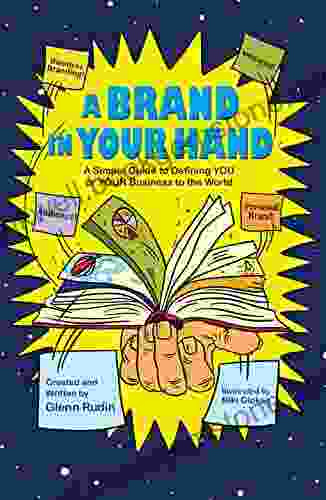
 Carl Walker
Carl WalkerA Comprehensive Guide to Defining Yourself or Your...
In today's competitive world, it's...

 Eliot Foster
Eliot FosterThe Civilization of the Renaissance in Italy: Classics,...
The Renaissance was a period of great cultural...

 Floyd Richardson
Floyd RichardsonUnveiling the Roadside Geology of Colorado: A Halka...
Colorado, a state renowned for its...
4.4 out of 5
| Language | : | English |
| File size | : | 5412 KB |
| Text-to-Speech | : | Enabled |
| Screen Reader | : | Supported |
| Enhanced typesetting | : | Enabled |
| Word Wise | : | Enabled |
| Print length | : | 245 pages |


